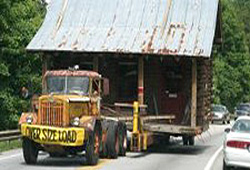Recently I attended service at a portable church. After the service I helped clear the stage area, which is when the idea for this list started.
Here are 10 tips that will help any portable church with a faster setup and teardown…and help the sound guy keeps his sanity!
1. Mark all cables with colored electrical tape. Venues often have existing equipment available for use so using colored tape on your cables helps separate out your cables from theirs. You might even mark your name with a permanent marker on the tape.
2. Mark any duplicate equipment. For example, if the venue provides music stands, microphone stands, or any other basic equipment (even microphones) that look like yours then mark your equipment with colored electrical tape. This way, you don’t spend 20 minutes trying to figure out what to pack up and what stays at the venue.
3. Record EQ settings. The venue I was at on Sunday had the house mixing unit on the side of the stage. Therefore, the only way to tweak the EQ was to tweak and then run out front, listen, run back. Recording the EQ settings for the next week will save you a lot of running.
4. Use a stage plot for quicker setup. You might even simplify this by saying you should set up the singers and musicians in the same place every week. This way, you can drop cables, DI boxes, and stands in the area where they will be performing.
5. Bring your own fresh batteries. Don’t rely on the venue to have new batteries in their wireless equipment, or even to have a box of batteries present. You can save money by having a battery tester so you can re-use your batteries from week to week. You can also go the rechargeable route. Just don’t rely on the venue for fresh batteries.
6. Use small crates for packing cables and small equipment. Yeah, I’ve worked gigs where the cables were tosses in a huge tote that took two people to carry. That’s fine until one person decides they can carry it themselves and next thing you know, they hurt their back or get injured in a nasty fall. Milk crates are a perfect size.
7. Have spare cables handy. In the portable environment, you are putting more wear and tear on your cables so you are more likely to have one go bad. Besides, you should have a few spares in any situation, portable or not.
8. Store microphones in cases. This means do not throw them in a box! Microphones contain sensitive components. You also don’t want to be hauling out a box of unprotected microphones to the car while it’s raining. Ya know what I’m sayin’?
9. Establish a setup crew and a routine.
Example:
—Everyone shows up at 8 am for the load in.
—Bob sets up the stage cabling.
—Steve sets up the mics.
—Steve and Carl unroll the snake.
Everyone should know what they need to do. Remember, those musicians are waiting for you so they can practice and you can set their mix right.
10. Have a process so that damaged equipment or cables don’t sneak back into service. I was setting up for a concert gig a few months ago and an electric extension cord started sparking when I plugged something into it. The guy running front of house at the time told me to tie a knot in the end of the electrical cable and toss it in the front of his truck. It’s a simple process that guaranteed that cable would get fixed before the next event.
Ready to learn and laugh? Chris Huff writes about the world of church audio at Behind The Mixer. He covers everything from audio fundamentals to dealing with musicians. He can even tell you the signs the sound guy is having a mental breakdown.





















